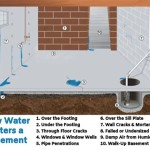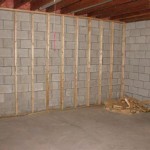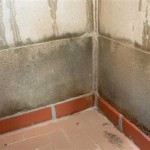Adding Vents to Existing Ductwork in Basements: A Comprehensive Guide
Adding vents to existing ductwork in basements is a common home improvement project that can significantly improve the comfort and air quality in your home. Here's a comprehensive guide to help you through the process:
1. Assessing Your Needs
Before you start adding vents, it's crucial to assess your basement's heating and cooling needs. Consider the size of the space, the number of windows, and the level of insulation. This information will help you determine the number and location of vents required.
2. Choosing the Right Vents
There are various types of vents to choose from, including floor vents, ceiling vents, and wall vents. Select vents that complement the aesthetic of your basement and provide adequate airflow. Consider the size and shape of the vents and ensure they align with your ductwork's dimensions.
3. Planning the Vent Locations
Proper vent placement is essential for effective air distribution. Place vents along exterior walls and near windows to facilitate cross-ventilation. Avoid installing vents too close to obstacles or furniture that may obstruct airflow. Sketch a layout of the intended vent locations for reference.
4. Cutting into the Ductwork
Use a metal saw or shears to carefully cut into the ductwork at the designated vent locations. Make sure the cuts are clean and precise to prevent air leaks. Wear safety glasses and gloves during this step.
5. Installing the Vents
Attach the vents to the ductwork using sheet metal screws or duct mastic. Ensure the vents are properly aligned and securely fastened. Seal any gaps or leaks with duct tape to prevent air loss.
6. Connecting the Vent Pipes
Use flexible duct pipes to connect the vents to the cutouts in the ductwork. Ensure the pipes are securely fastened with duct tape or clamps. If necessary, use elbows or adaptors to accommodate bends or transitions in the ductwork.
7. Balancing the Airflow
Once all vents are installed, it's important to balance the airflow to ensure each room receives adequate heating or cooling. Adjust the dampers on the vents as needed to regulate the airflow. Use a manometer or flow hood to measure the airflow and make necessary adjustments.
8. Testing and Maintenance
After completing the installation, test the system by running your heating or cooling unit. Check for any air leaks or imbalances and rectify them as needed. Regularly clean or replace the vents to maintain optimal airflow and prevent dust buildup.
Conclusion
Adding vents to existing ductwork in basements is a feasible project that can significantly enhance your home's comfort and air quality. By following these steps, you can ensure a successful and efficient installation. Remember, if you're not comfortable performing the task yourself, it's recommended to consult a qualified HVAC technician for assistance.

Adding A Vent To Existing Ductwork In The Basement Do It Yourself 2024 Youtube
How To Tap Into Existing Ducts For Basement Diy Home Improvement Forum

The Mighty Ducts Running New Laundry Vents Young House Love

Make Your Basement Warmer By Adding A Cold Air Return Vent Youtube

Finishing Basement How To Extend Hvac Vent Doityourself Com Community Forums

Can I Tap Into Existing Ductwork And How Pickhvac

Let There Be Lights Basement Renovation Update Organizing Homelife

How To Install Ductwork In A Basement Diy Finished Renovation Youtube

Can I Tap Into Existing Ductwork For Basement Heat Doityourself Com

How Much Does Adding A Vent To Existing Ductwork Cost Sky Heating Ac Plumbing Electrical








